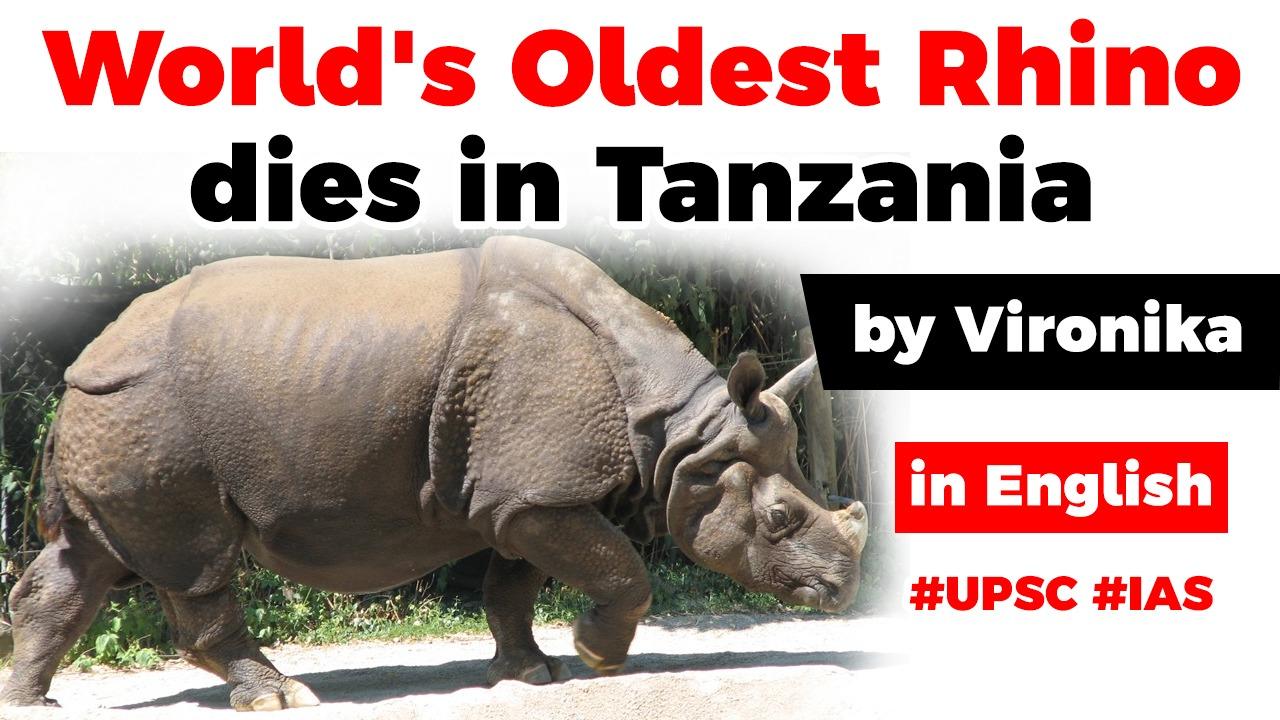Table of Contents
- A rhino thought to be the oldest in the world has died in Tanzania, aged 57.
- Fausta, a female black rhino, died of natural causes in captivity in the Ngorongoro Crater.
- Records show that Fausta lived [longer] than any rhino in the world and survived in the Ngorongoro, free-ranging, for more than 54 years before it was kept in a sanctuary for the last three years of its life in 2016.

- Fausta was first located in 1965 when she was between three and four years old. Her health deteriorated after hyenas attacked her in 2016. She was subsequently taken into refuge.
- Rhinos’ life expectancy is around 40 years in the wild, but they can live an extra decade in captivity.
- Decimated by poaching, black rhinos now number around 5500, according to charity Save The Rhino.
- The smaller of the two African species, they are found in southern and eastern Africa, including Kenya, Tanzania, Namibia, South Africa and Zimbabwe
- The eastern black rhino is listed as critically endangered. Its numbers are dangerously low because the animals are often poached for their horn – however, numbers are increasing.
DNA database for Indian Rhino
- The Environment Ministry has embarked on a project to create DNA profiles of all rhinos in the country.
- By 2021, the Indian rhino could be the first wild animal species in India to have all its members DNA-sequenced.
- The project’s proponents include the World Wildlife Fund for Nature-India (WWF-India) and the Centre-funded Wildlife Institute of India (WII).
- The Indian rhinoceros also called the greater one-horned rhinoceros and great Indian rhinoceros is a rhinoceros native to the Indian subcontinent.
- It is listed as Vulnerable on the IUCN Red List, as populations are fragmented and restricted to less than 20,000 km2 .
National Rhino Conservation Strategy
- It calls for active engagement between India and Nepal to conserve the Greater onehorned rhinoceros.
- The plan said the single population of rhinos in SuklaPhanta (Nepal), Valmiki Tiger Reserve (India) and Chitwan National Park (Nepal) and Dudhwa (India) is separated by the political boundary between the two countries.

Indian Rhino Vision 2020
- Launched in 2005, Indian Rhino Vision 2020 is an ambitious effort to attain a wild population of at least 3,000 greater one horned rhinos spread over seven protected areas in the Indian state of Assam by the year 2020.
- Seven protected areas are Kaziranga, Pobitora, Orang National Park, Manas National Park, Laokhowa wildlife sanctuary, Burachapori wildlife sanctuary and Dibru Saikhowa wildlife sanctuary.
THE NEW DELHI DECLARATION ON ASIAN RHINOS 2019
- India and four rhino range nations have signed a declaration ‘The New Delhi Declaration on Asian Rhinos 2019’ for the conservation and protection of the species held Second Asian Rhino Range Countries meeting.
- India will collaborate with Bhutan, Nepal, Indonesia and Malaysia to increase the population of three species of Asian rhinos, including the Greater one-horned rhinoceros found in the Indian sub-continent.
- The declaration was signed to conserve and review the population of the Greater one-horned, Javan and Sumatran rhinos every four years to reassess the need for joint actions to secure their future
- The declaration includes undertaking studies on health issues of the rhinos, their potential diseases and taking necessary steps; collaborating and strengthening wildlife forensics for the purpose of investigation and strengthening of transboundary collaboration among India, Nepal and Bhutan for the conservation and protection of the Greater one-horned rhino.
Latest Burning Issues | Free PDF






















 WhatsApp
WhatsApp